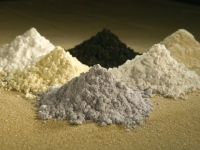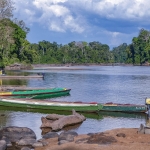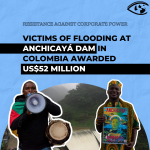Baotou Iron & Steel to Expand Vast Toxic Lake Dump at Inner Mongolia Rare Earths Complex

Photo: Peggy Greb, U.S. Department of Agriculture. Used under Creative Commons license.
Baotou Iron & Steel Group in China’s Inner Mongolia province is planning to spend 2 billion yuan (US$280 million) to expand a huge manmade lake near Baotou city that contains toxic historical “tailings” (waste left behind after processing ore) from the world’s largest rare earth mine and refinery.
Such an expansion is likely to have a significant impact on the local population who already suffer from cancer rates 70 times higher than the rest of the country. Indeed the health problems are so significant that Baotou now hosts a 20-story hospital dedicated purely to bone medicine.
The company recently posted a request for design proposals to expand the tailings facility at the Baogang Steel and Rare Earth complex in Baotou offering to pay 5.65 million yuan (US$790,000) to the winning applicant.
Rare Earths The major reason for the expansion of the complex is the boom in the market for rare earths – notably to feed the demand created by new green technologies. Despite their name, rare earths are found everywhere on the planet in small quantities. But some of the richest deposits and the biggest mines are in China which extracts 70 percent of the world’s annual production. China also hosts the biggest rare earth refineries in the world and manufactures over 80 percent of electric batteries and 64 percent of electric cars worldwide, according to the Intenational Energy Agency. What makes them most useful is the fact that they all have a special band of electrons (called f-electrons) that help protect them from heat and other demagnetizing fields. Alloys that contain rare earths are much more powerful than traditional magnets, allowing manufacturers to shrink the size of devices such as mobile phones. The most commonly utilized rare earths are dysprosium, neodymium, praseodymium and terbium. |
The Baogang Steel and Rare Earth complex was founded in 1954. “Before the factories were built, there were just fields here as far as the eye can see. There were watermelons, aubergines and tomatoes,” Li Guirong, secretary general of the local branch of the Communist party, told Le Monde newspaper in 2012.
In the last seven decades, the refinery has expanded massively, swelling the city population from just 97,000 in 1950 to 2.5 million today, altering the landscape with chimneys and cooling towers that stretch all the way to the horizon.
One of the most dramatic changes to the landscape is the creation of a manmade lake that is some 10 kilometers long and over 2 kilometers wide, built to hold the leftover waste minerals from the refinery. This waste is mixed with water and dumped into the lake which is secured behind a 40 meter high dam that was built in August 1965, according to company documents, and expanded over time.
The lake that was described recently by Tim Maughan, a novelist and scriptwriter, who visited the region with a group called the Unknown Fields Division, a group of architects, academics and designers at the Architectural Association School of Architecture in London.
“It feels like hell on Earth,” Maughan wrote in a post for the BBC’s website. ”Dozens of pipes line the shore, churning out a torrent of thick, black, chemical waste from the refineries that surround the lake. The smell of sulphur and the roar of the pipes invades my senses.
The Baotou refinery sources much of the ore that it processes from the nearby Bayan Obo mines which has also affected the local community. “Most people around Bayan Obo mine are ethnic Mongolian people and traditional nomads. They told me that first the animals got sick, then the babies got sick, and then everybody else got sick,” Julie Klinger, a geographer and an assistant professor of international relations at Boston University, told a researcher. “I can tell who was born and raised downstream of the mine because they often have skin lesions, thinner hair, brown teeth, and bone deformities.”
Li Guirong says that the mine and the refinery have destroyed the agriculture of the region. "Plants grew badly. They would flower all right, but sometimes there was no fruit or they were small or smelt awful,” he told Le Monde.
The newspaper interviewed He Guixiang, a local farmer who complained of serious health problems. “I have aching legs, like many of the villagers. There’s a lot of diabetes, osteoporosis and chest problems,” she told Le Monde. “All the families are affected by illness.”



